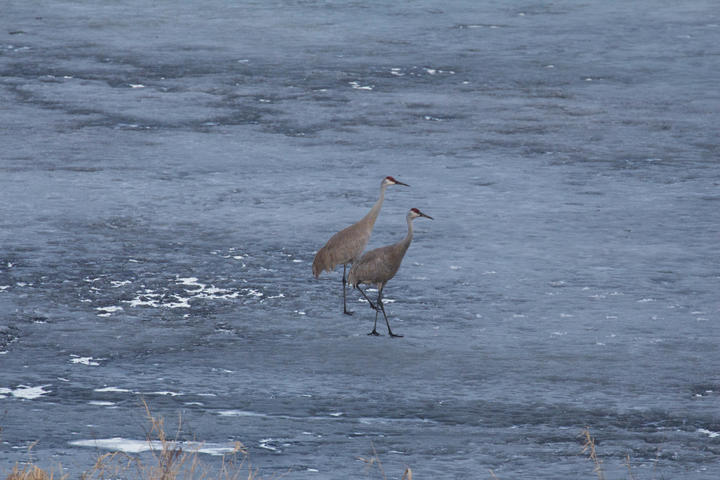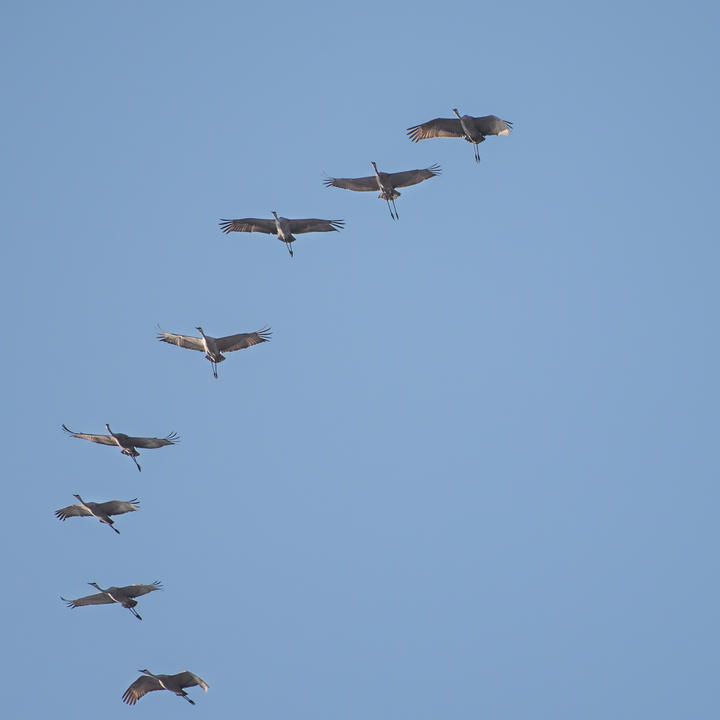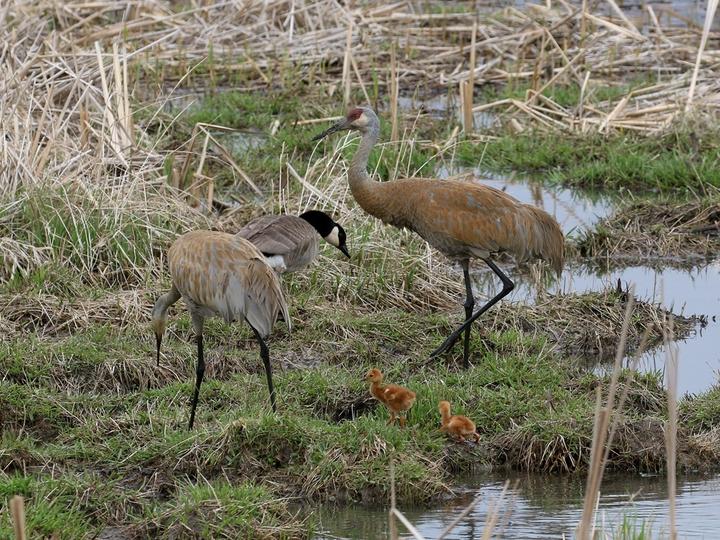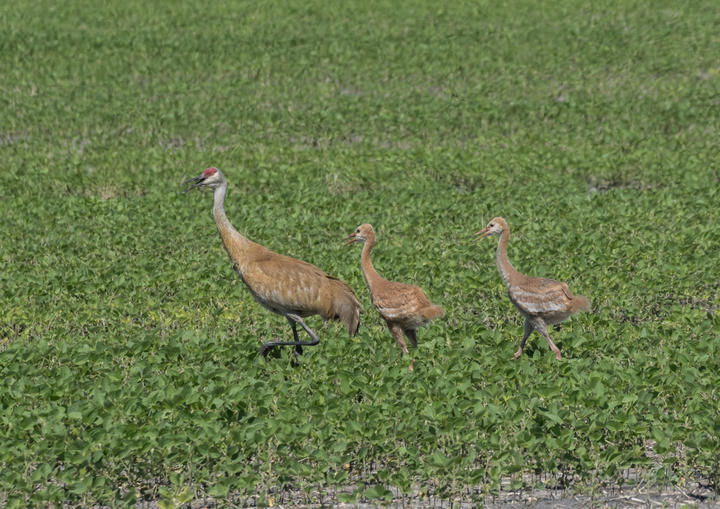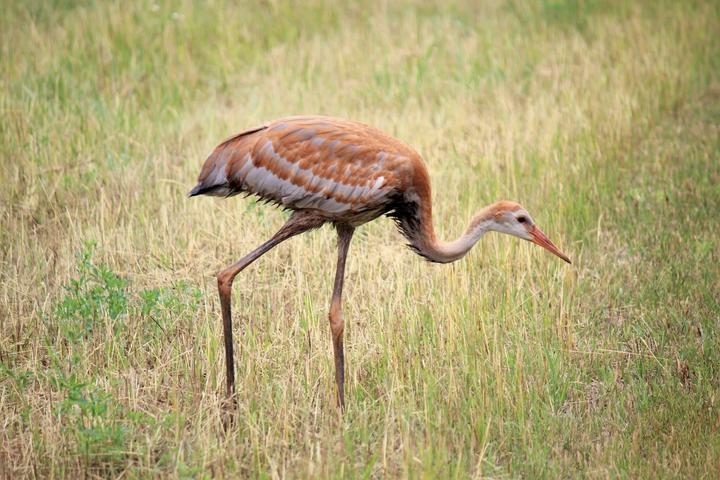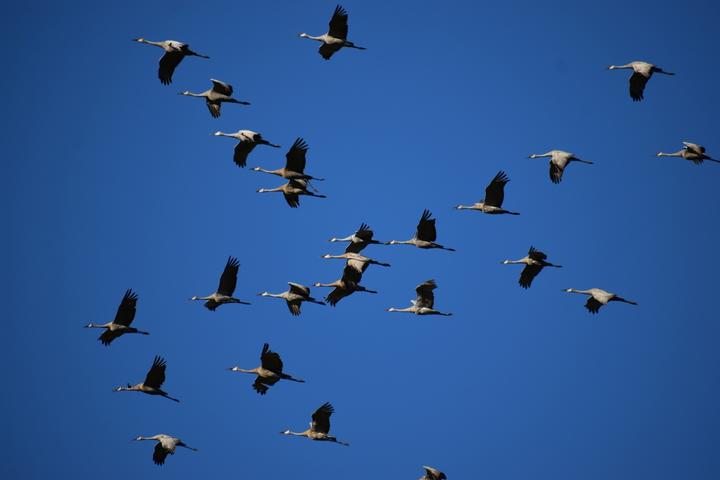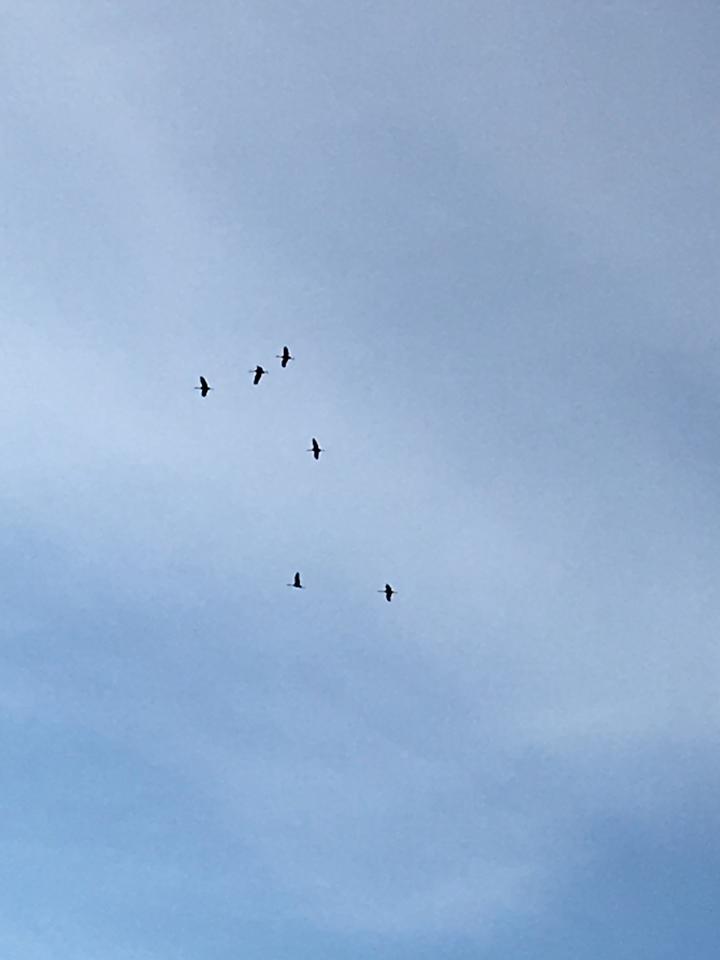More names for this bird
Anishinaabemowin: Ajijaak
Dakota: Pehaŋ (crane)
The Dakota and Anishinaabe were among the earliest people to name Minnesota’s plants and animals, as well as to understand them in relation to Minnesota’s climate and seasons. Those original names are still in use, and several are included on the Season Watch website.
Latin (or scientific name): Grus canadensis
The scientific community has a convention of assigning agreed-upon Latin names to every kind of organism. Using scientific names helps people communicate confidently about the same organism and organize lifeforms based on how closely related they are.
Page contents
About the sandhill crane
Sandhill cranes dancing in wetland
Video by Mila Velimirovich, Bell Museum educator
About the sandhill crane
- The sandhill crane is one of the largest birds in Minnesota, standing at four to five feet tall.
- Its loud, rattling bugle calls, given in flight as well as on the ground, can be heard from up to 2½ miles away.
- Similar to most birds, sandhill cranes have hollow bones adapted for flying long distances. This means that adult sandhill cranes weigh surprisingly little for their height—as little as five to eight pounds!
- The sandhill crane is not threatened, but its close relative—the whooping crane—is endangered.
- Sandhill cranes migrate. Expand the "Migration animation" section below to learn more.
Migration animation
Migration animation
Click the full-frame icon (lower right corner of video) to play at full size.
More about eBird's abundance animations
eBird data from 2006-2020. Estimated for 2020. Fink, D., T. Auer, A. Johnston, M. Strimas-Mackey, O. Robinson, S. Ligocki, W. Hochachka, L. Jaromczyk, C. Wood, I. Davies, M. Iliff, L. Seitz. 2021. eBird Status and Trends, Data Version: 2020; Released: 2021. Cornell Lab of Ornithology, Ithaca, New York. https://doi.org/10.2173/ebirdst.2020
Visual guide to phenology
Watch for changes in sandhill cranes' presence (or absence), abundance, and behaviors at different times of year. Also, pay attention to when young-of-year appear and develop.
Note to observers
This page explains general clues to watch and listen for when observing sandhill crane phenology. However, this page does not explain how to identify this bird or collect data in a standardized way.
- For help with identification, see The Cornell Lab's All About Birds.
- For guidance on collecting data, see Nature’s Notebook.
Audio resources
Visit All About Birds for recordings of songs and calls by sandhill cranes.
Graphs and historical data
Note: The Orientation Center provides a map, as well as information on reading graphs; interpreting summary statistics, who collected the data and how; and how to download datasets for independent exploration.
Arrival (flying north)
- Earliest: March 4 (occurred in 2000)
- Average: March 18
- Latest: March 31 (occurred in 1980)

More resources
